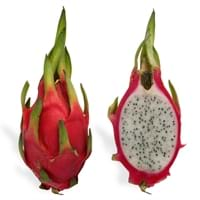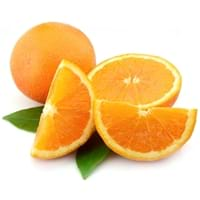Health Benefits
Anti-oxidant properties, Anti-aging benefits, Maintains healthy cholesterol level, Weight loss properties
Arthritis treatment, Cancer prevention, Heart care
General Benefits
Helps in weight loss, Suppresses Arthritis
Anti-inflammatory properties, Cures cough, Cures fever, Digestive aid, Healing of wounds, Maintains healthy cholesterol level
Skin Benefits
Anti-aging benefits, Heals sunburn, Treatment of acne
Anti-aging benefits, Brightens and lightens complexion, Reduces wrinkles, Treatment of dark spots
Hair Benefits
Treatment of colored hair
Promotes longer and healthier hair, Protects hair, Rejuvenates scalp, Shiny hair
Allergy Symptoms
NA
Abdominal cramps, Hives, Itching, Nausea, Wheezing
Side Effects
NA
Allergic reaction, Skin rash, Possibly unsafe during pregnancy
Lactating Women
Not Available
No
Best Time to Eat
Any time except an hour after meal, Don't consume at night and before bed
As a snack in the late afternoon, Eat the fresh ones, avoid mixing with any other foods, don't eat after meal., Morning time (before lunch), Strictly avoid empty stomach
Vitamin A (Retinol)
Not Available
Vitamin B5 (Pantothenic Acid)
Not Available
Vitamin B6 (Pyridoxin)
Not Available
Vitamin B9 (Folic acid)
Not Available
Vitamin C (Ascorbic Acid)
Vitamin E (Tocopherole)
Not Available
Vitamin K (Phyllochinone)
Not Available
Lutein+Zeaxanthin
Not Available
Calories in Fresh Fruit with Peel
Not Available
Calories in Fresh Fruit without Peel
Not Available
Calories in Frozen Form
Not Available
Not Available
Calories in Dried Form
Not Available
Calories in Canned Form
Not Available
Calories in Pie
Not Available
Type
Berry, Citrus, Fruit vegetable, Melon, Tree fruit, Tropical
Citrus
Season
Early fall, Summer
Winter
Varieties
Selenicereus megalanthus and Hylocereus polyrhizus
Clementine, Dancy, King Mandarin, Murcott, Ponkan, Robinson, Satsuma and Sunburst
Color
Magenta, Pink
Orange
Inside Color
White
Orange
Origin
Central America, Mexico
South-Eastern Asia
Grows on
Trees
Not Available
Soil Type
NA
Well-drained
Climatic Conditions
NA
Sunny
Facts about
NA
- It is known by another name ' Mandarin'.
- Oil extracted from its peel is used in various skin and hair care products.
- Tangerines is also known as the ‘Christmas Orange’ because it is used to stuff kids' stockings..
Spirits
Yes
Not Available
Cocktails
Yes
Not Available
Other Countries
NA
Brazil, Iran, Italy, Japan, Korea, Morocco, Spain, Turkey
Top Exporter
Vietnam
Spain
Botanical Name
Hylocereus undatus
Citrus reticulata
Synonym
Pitaya, Red Pitahaya, Night blooming Cereus, Strawberry Pear, Belle of the Night, Conderella plant
Citrus clementina or Citrus nobilis
Subkingdom
Tracheobionta
Tracheobionta
Division
NA
Magnoliophyta
Class
Not Available
Magnoliopsida
Subclass
Liliidae
Rosidae
Order
Caryophyllales
Sapindales
Family
Cactaceae
Rutaceae
Species
H. undatus
C. reticulata
Generic Group
Cactus
Citrus fruit
Difference Between Dragonfruit and Tangerine
We might think that Dragonfruit and Tangerine are similar with respect to nutritional value and health benefits. But the nutrient content of both fruits is different. Dragonfruit and Tangerine Facts such as their taste, shape, color, and size are also distinct. The difference between Dragonfruit and Tangerine is explained here.
The amount of calories in 100 gm of fresh Dragonfruit and Tangerine with peel is 60.00 kcal and Not Available and the amount of calories without peel is Not Available and 53.00 kcal respectively. Thus, Dragonfruit and Tangerine belong to Low Calorie Fruits and Low Calorie Fruits category.These fruits might or might not differ with respect to their scientific classification. The order of Dragonfruit and Tangerine is Caryophyllales and Sapindales respectively. Dragonfruit belongs to Cactaceae family and Tangerine belongs to Rutaceae family. Dragonfruit belongs to Hylocereus genus of H. undatus species and Tangerine belongs to Citrus genus of C. reticulata species. Beings plants, both fruits belong to Plantae Kingdom.









